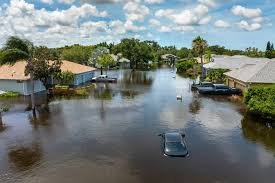Totaled by Fire’: What to Do If Your Car Was Destroyed in the 2025 Wildfires in USA

The 2025 wildfire season has devastated large swaths of the western and southern United States. From California to Texas, thousands of vehicles have been destroyed by fast-moving flames, intense heat, and smoke. If your car was totaled by fire, you’re not alone—and it’s critical to know your rights, your next steps, and how this incident may affect your car insurance going forward.
In this blog, we’ll walk you through what to do immediately after your vehicle is destroyed in a wildfire, how to handle your comprehensive insurance claim, and what to expect when it comes to total loss payouts, premium changes, and finding new coverage in 2025.
🔥 Wildfires in the USA 2025: A New Reality
With climate change intensifying weather patterns, wildfires in the USA have become more destructive each year. According to the National Interagency Fire Center (NIFC), over 10 million acres have burned so far in 2025, and more than 65,000 vehicles have been reported damaged or destroyed in the fires.
These losses are prompting a wave of comprehensive insurance claims—and with that comes rising premiums, stricter policy renewals, and more drivers looking for guidance.
🚗 Step 1: Was Your Vehicle Covered?
To receive compensation for a car destroyed in a wildfire, you must have had comprehensive auto insurance at the time of the incident.
✅ What Comprehensive Coverage Includes:
- Fire and wildfire damage
- Smoke and ash damage
- Heat-related melting of parts
- Falling tree or debris impacts during wildfires
If you only carried liability insurance, your policy does not cover wildfire damage.
📋 Step 2: File a Fire Damage Car Insurance Claim Immediately
As soon as it’s safe and you’ve confirmed the loss, contact your insurer to file a claim. Most insurance companies now offer mobile apps or online claims portals for faster service.
What You’ll Need:
- Your policy number
- The date and location of the wildfire
- Photos or videos of the damage (if safe to obtain)
- A fire department report or incident number (if available)
- Police report if required in your state
Your insurer will assign an adjuster to assess the damage. In most wildfire cases where the car is fully burned, the vehicle is considered a total loss.
🧾 Step 3: Understand Total Loss and Actual Cash Value (ACV)
If your vehicle is deemed “totaled by fire”, your insurer will reimburse you based on its Actual Cash Value (ACV)—the market value of the car just before the fire, minus your deductible.
Factors That Affect ACV:
- Vehicle age and mileage
- Model and trim
- Condition before the fire
- Local market resale values
💡 If your vehicle was financed or leased, and the ACV is less than what you owe, you may need GAP insurance to cover the remaining balance. Learn more about GAP insurance at Investopedia.
📈 Step 4: Expect Possible Premium Increases
Even though wildfire damage is a no-fault claim, it still goes on your insurance record as a comprehensive claim. This can result in a car insurance premium increase, especially if:
- You’ve filed other claims recently
- You live in a high-risk wildfire zone
- Your ZIP code has been flagged for future catastrophe exposure
📌 According to NerdWallet, a comprehensive claim may increase your rate by 10–25%, and more if you’re in a repeatedly affected area.
🛑 Step 5: Know Your Rights If the Insurer Refuses Renewal
Due to rising reinsurance costs and fire risks, many insurers are pulling out of wildfire-prone states. If your insurer chooses not to renew your policy after a claim, they must give you advance notice (usually 30–60 days, depending on the state).
If you’re facing non-renewal:
- Shop for alternative insurance providers
- Contact your state’s Department of Insurance
- Explore state-run “insurer of last resort” programs
For example, California drivers can access the California FAIR Plan for essential auto and home coverage in high-risk fire zones.
🧭 Where to Shop for Auto Insurance After a Wildfire
If your current insurer drops you or raises your rates excessively, it’s smart to compare quotes. In 2025, several regional and usage-based insurers still offer competitive rates in fire-prone states.
Recommended Platforms:
When comparing, look for:
- Availability of comprehensive coverage
- Reasonable deductibles
- Reputation for handling disaster claims
🧠 Pro Tips to Prepare for Future Wildfire Seasons
Even after a claim is closed, it’s wise to protect yourself for future risks.
✅ Steps to Take:
- Install fire-resistant car covers
- Keep important documents in a fire-safe box or cloud storage
- Use a dash cam to record vehicle condition and surroundings
- Raise your comprehensive deductible if you can afford a higher out-of-pocket cost to lower premiums
- Maintain GAP insurance if your vehicle is financed
🔗 Useful Resources
- NIFC – Wildfire Statistics 2025
- Does Car Insurance Cover Wildfires? (NerdWallet)
- California FAIR Plan – High-Risk Coverage
- GAP Insurance Explained (Investopedia)
🏁 Final Thoughts
If your vehicle was totaled by fire in the devastating 2025 wildfires, know that you’re not alone—and you’re not powerless. Acting quickly, understanding your policy, and preparing for what comes next can save you money, time, and stress.
Stay vigilant, review your comprehensive auto insurance, and make sure you’re equipped for a future where wildfire risk is the new normal.




